Food preservation in the days of the ol’ West wasn’t even close to what it is today. Commercially preserved food wasn’t widely available in the late 1800s when the cowboy culture was at its peak (though it did exist, surprisingly enough), and storage space was at a premium when they were on the trail, so the cowboys who rode West oftentimes made do with what was available to supplement their packable diet of dried beef and beans: wild game and edible plants.
Nomadic Diets
We all know that plant life varies from place to place. This means that, depending on where the herd took them, cowboys were forced to alter their diets to include whatever was growing locally. They didn’t stay in one place long enough to cultivate crops and produce doesn’t store well on long journeys, so they mostly relied on wild edibles to supplement their chuckwagon-diets of dried beef and beans.
Related: 15 Lost Survival Tips From The Cowboys Who Wandered The West – With Illustrations
Living off the plants that inhabited their current environs required a specific sort of knowledge. Chuckwagon cooks and the cowboys themselves learned from Native Americans and from other cowboys. Along with other cowboy skills like roping, driving cattle, and tending the herd, cowboys passed on their knowledge of edible plants to the new recruits.
The following types of plant life were consumed on the trail, but you’ve got to keep in mind that the varieties of plants consumed varied a great deal based on region. In the desert and semi-arid western areas, for example, juicy berries and leafy greens were few and far between, but sage and cacti abounded. Cowboys might consume a completely different lineup of plants as they made their way along their routes.![]()
Berries
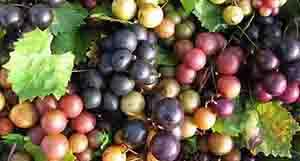
There are several types of wild berries that could be found across the West. Muscadines, a type of wild grape, were common cowboy fare, along with elderberries, mulberries, blueberries, blackberries, gooseberries, currants, and wild strawberries.
Related: If You See This Berry, You May Want To Harvest It
The availability of these wild berries was obviously very dependent on the season. Berries tend to stay on their bushes or vines for a very short period of time before they either rot or are snatched up by animals. Due to their limited availability, cowboys often brought along dried fruit. They commonly created puddings and cobblers of a sort using fruit and either biscuits of sourdough bread so that they weren’t always deprived of dessert when they were overland.![]()
Nuts
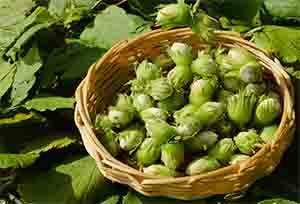
Being in the saddle all day could wear a cowboy out, and next to heavily caffeinated coffee, protein was one of the most effective ways for the cow herds to keep their energy up. This, along with the fact that they were easy to transport and prepare and were filling, led to dried beef and beans being famous for comprising the cowboy diet.
There’s more than one way to crack a nut, though, and cowboys found extra protein that didn’t make them quite as gassy in local nuts. They ate acorns (properly leached of tannins, of course), pecans, pine nuts, hazelnuts, and other types of tree nuts commonly found out west. These nuts were often roasted over an open fire and enjoyed as a tasty snack around the campfire at night, oftentimes passed around with a bottle of liquor, another cowboy staple.
Related: How to Use Acorns as Survival Food
![]()
Herbaceous Greens
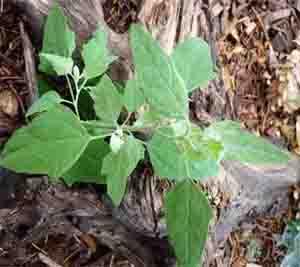
While a salad of wild greens sounds like a delicious meal or side dish today, people didn’t place the same stock in the healthful nature of green vegetables in the late 19th century. Instead herbs and other tasty leafy greens were thought of more as seasoning. Local wild herbs like sage, wild garlic, and chicory.
Related: How To Make A Perfect Dandelion Salad – The Depression Era Staple
Watercress is a commonly found and popular wild green, along with dandelion, both of which were sometimes consumed on cattle drives. Asparagus, lamb’s quarters, and chickweed were other additions to traditional cowboy ‘whistle berries’, or beans. While beans are filling, they’re not exactly the most flavorful or satisfying on their own, so these plants added flavor and variety to the Western cowboy’s diet.![]()
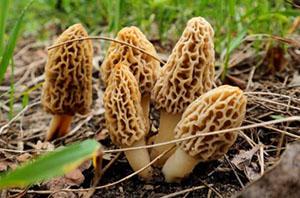
Fungi
Though fungi weren’t as common in drier areas of the west, there were still plenty to forage. Mushrooms were commonly shunned as food source in those days due to the fact that many fungi are incredibly poisonous and look remarkably like their edible counterparts, but with a proper passing on of cowboy knowledge, many cow herds enjoyed the culinary masterpiece that is the morel mushroom or the meaty puff-ball mushroom, both commonly found in the west.
Related: Edible and Non-edible Mushrooms you Find in Forests![]()
Cacti
In dessert and steppe areas along the trails of the old West, where fruit and other wild plants were few and far between, there were always cacti. Despite their spiky nature, many cacti varieties are edible, either in part or the whole plant, so long as they are prepared properly. Not only were they a viable food source, they were a refreshing, watery treat on long, hot days in the saddle.
Related: Meds You Actually Don’t Need to Stockpile
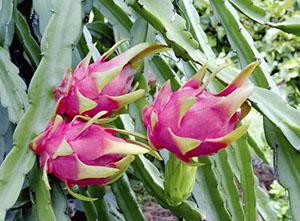
The prickly pear cactus, with its tasty fruit and leaves (often referred to as ‘pads’) that are perfectly edible once the spines are removed, was a favorite for cowboys in the Western states. Pitaya is also commonly consumed. Some cactus fruit can have a laxative effect, which could lead to dangerous dehydration, not to mention a really awful case of a sore hind end, so knowledge of which plants made good eating was also passed along from cowboy to cowboy.![]()
Eventually, the development of a comprehensive railroad system out West led to an obsolete cowboy lifestyle. There was a more efficient way to drive large amounts of cattle across the country to feed a budding population from the packing plants in the western half of what is now the all the United States. Today, the cowboy way carries on in some Western states, with cowboys continuing to raise cattle on their ranches, herd them to market, and sell them to feed the booming beef industry, but much of the cowboy cuisine has gone by the wayside due to improvements in food storage and preservation techniques.
However, there are still pockets of true cowboys across the west, and though they may have access to modern foods on the trail, they’re bound to indulge in an old cowboy foraged favorite every once in a while.
You may also like:
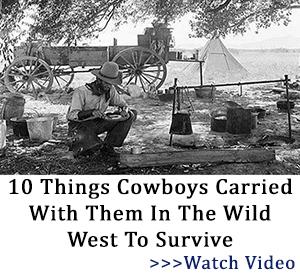 Do You Recognize this Tree? [All Parts are Edible]
Do You Recognize this Tree? [All Parts are Edible]
What Happens When You Bury A Shipping Container (Video)
10 Edible Roots That Kept This Hermit Monk Alive

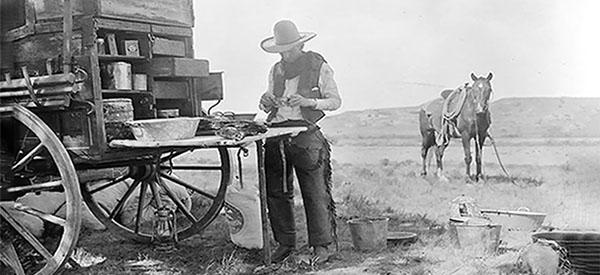




















My respect to you, but pitaya is a wet-tropics native to C. America. There is an American-desert version, cerise. Prickly pear is common up into Canada. Young leaves (napolitos) were pickled, the fruit juiced. Cholla fruit is good, one type is strawberry cactus. Yucca root is called Indian potatoes, for good reason, but a fibrous one is good only for bathing, soap root. the fruit is called datil de yuca, and is cleaned, stuffed, and deep-fried, and the banana yucca, which tastes like a bland (to me) squash–all parts of yucca must be cooked or you can be poisoned. Mesquite was relished by men and animals alike. The flour, today, sells for about 14 bucks a pound. Wild peppers were common. Wild maize. Anyone who starved to death in Southwest was not a local. Mustang grapes, not muscadine, are still common. Black walnuts, pecans, Indian turnips (timpsula!) is great. Most mushrooms did not produce till the rains started in July, and you did not trail livestock after that. Peace.
The napolitos are good julienned and cooked like green beans. The texture is even similar to green beans. The prickly pear fruit is wonderful too. Had pickled cactus (don’t know what kind it was) in Texas once. It reminded me of watermelon rind pickles.
Come on people! There are very very few folks that are going to sit through you “much too long” preamble, so get on with the grunt. If you want me to even consider your product, do not make me wait any more than 30 seconds before you get to the bottom line, and then, if you have my interest, I will get into you verbal diarrhea, time permitting. Best advise to you is to allow a fast forward time bar that allows us to go see if we are really interested, and if so, we can go back and watch the BS that you ramble on about.
Life is to short to be in such a hurry
I totally agree.
I think Jerry was talking about the long monolog that accompanies some of the ads that appear on this site. I too hate to listen to them. First of all, I can read a lot faster than the commentator can speak understandably. I too want to get to the bottom line right away. I have solved the problem. If the ad is verbal, I just cut it off and do not purchase the product.
There is always the delete key for anything one doesn’t want to hear, view or read on the internet.
Black walnuts grow across the Ohio, Pennsylvania, and New York state, along with butternuts, but I’d have to be pretty desperate to spend time cracking them. And then trying to pick the nutmeat out. Hazelnuts grow in those states, too [maybe lots more, I just know about those from experience]. The squirrels know how good they are, and have almost always beaten me to the draw… How about sunchokes, that used to be called Jerusalem artichokes? They are native to north America. And sunflower seeds. Didn’t the Indians use them in their pemmican sometimes?
Maybe the geographic location of miner’s Lettuce is limited to the Pacific Coast Range so it was omitted, but having had a young forager point it out to me, I heartily endorse it. I was told the Latin name, but the time span between that instruction and now is too great. Maybe one ot the readers can assist.
Of course, in real life both the cowboys and The Native Americans were social groups of indigenous Americans, as European settler immigrants were still mainly eastern bound, cowboys and Natives learned from their ancestors and families, not to make any substance of the foreign Hollywood media separation of American social groups and trying to Briticize the American cowboy by turning them into British people especially when most Americans were and are Whiter than the British and the Brits never had a tanned Red in their color palette. Still, an otherwise pretty good handling of the olden times from a pretty good publication doing a great service and business. Thank you.